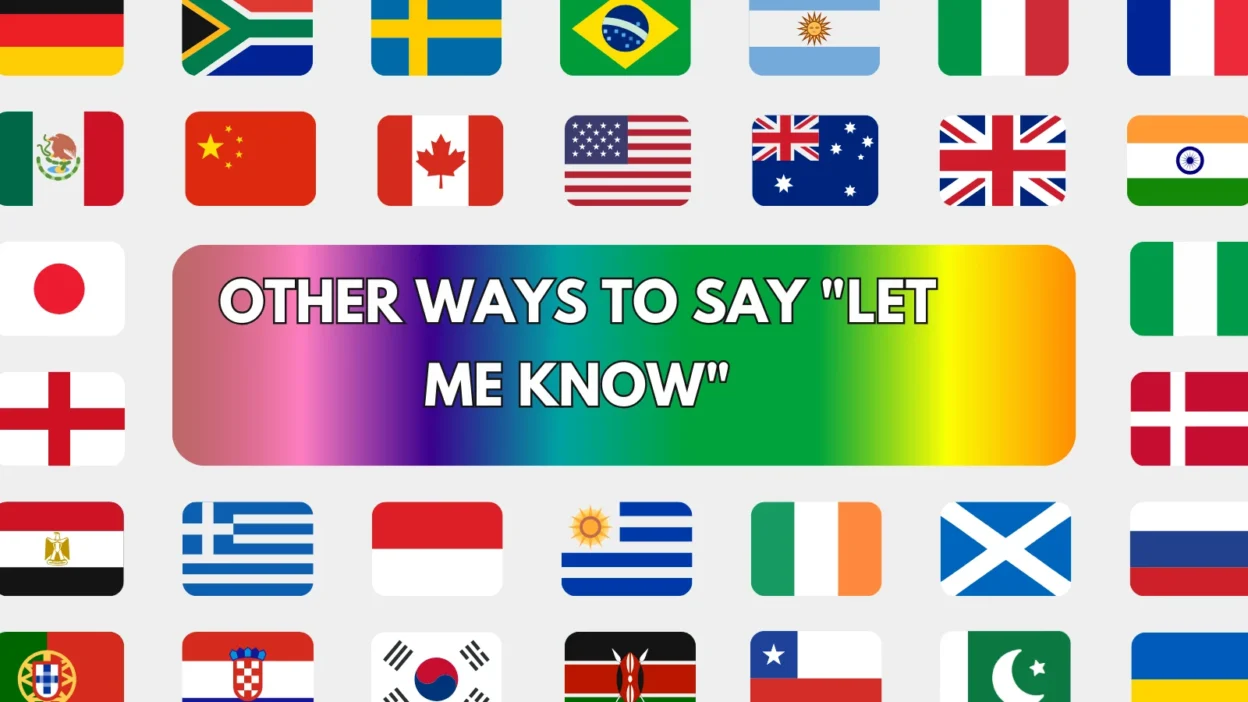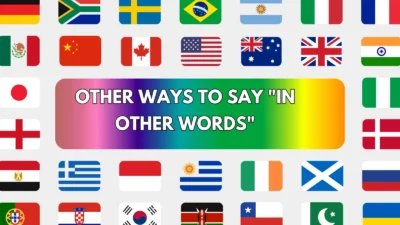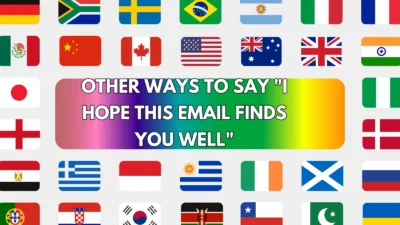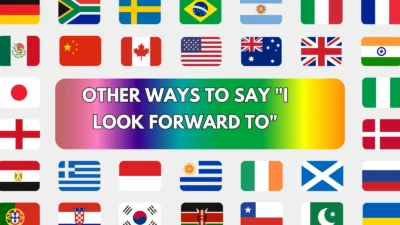The phrase “Let me know” is widely used in both casual and professional communication. It’s polite and direct — perfect for inviting a response, confirmation, or opinion. However, repeating the same phrase too often can make your messages sound repetitive or unpolished.
To enhance your communication and match different tones or settings, it’s smart to have a variety of alternatives ready. Below are 25 effective and versatile ways to say “Let me know”, complete with explanations and examples.
1. Please Inform Me
Meaning:
A formal request for someone to give you information.
Detailed Explanation:
Best used in professional or academic communication, this alternative sounds polished and respectful.
Scenario Example:
Please inform me if the schedule changes.
Best Use:
Business emails, formal reports, official notices.
Tone:
Formal, respectful, professional.
2. Keep Me Posted
Meaning:
Ask someone to regularly update you on a situation.
Detailed Explanation:
More casual than “inform me,” this is friendly and commonly used.
Scenario Example:
Keep me posted on the client’s feedback.
Best Use:
Team chats, casual emails, ongoing projects.
Tone:
Friendly, informal, conversational.
3. Get Back to Me
Meaning:
Ask someone to respond after checking or deciding something.
Detailed Explanation:
Direct and simple, this is commonly used when you expect a reply soon.
Scenario Example:
Please get back to me when you’ve reviewed the files.
Best Use:
Business communication, follow-ups.
Tone:
Professional, direct, neutral.
4. Give Me a Heads-Up
Meaning:
Ask to be alerted in advance about something.
Detailed Explanation:
Ideal when you want to be prepared for a possible situation or change.
Scenario Example:
Give me a heads-up if the meeting gets pushed.
Best Use:
Team messages, informal settings, project management.
Tone:
Casual, cooperative, warm.
5. I’d Appreciate an Update
Meaning:
A polite request for the latest information or progress.
Detailed Explanation:
Adds a respectful and professional touch to the request.
Scenario Example:
I’d appreciate an update on the marketing strategy.
Best Use:
Professional follow-ups, project check-ins.
Tone:
Polite, formal, professional.
6. Let Me Hear from You
Meaning:
Invite a response or opinion in a warm, open way.
Detailed Explanation:
This feels more personal, often used in letters or friendly emails.
Scenario Example:
Let me hear from you once you’ve made a decision.
Best Use:
Email sign-offs, friendly conversations.
Tone:
Warm, open, semi-formal.
7. Reach Out to Me
Meaning:
Encourage the other person to contact you.
Detailed Explanation:
Often used to show availability or openness to communication.
Scenario Example:
Feel free to reach out to me with any concerns.
Best Use:
Customer service, professional emails.
Tone:
Approachable, courteous, neutral.
8. Keep Me in the Loop
Meaning:
Ask to stay informed about ongoing developments.
Detailed Explanation:
Common in teamwork and collaboration, it keeps communication open.
Scenario Example:
Please keep me in the loop about any changes.
Best Use:
Project teams, group communication.
Tone:
Collaborative, informal, friendly.
9. Tell Me
Meaning:
Directly ask for information or opinion.
Detailed Explanation:
Short and clear, works well when the context is casual and clear.
Scenario Example:
Tell me if you’d prefer a different date.
Best Use:
Quick texts, informal communication.
Tone:
Simple, informal, direct.
10. Notify Me
Meaning:
Request to be officially or formally informed.
Detailed Explanation:
Sounds more formal and is often used in systems, alerts, or structured environments.
Scenario Example:
Please notify me once the documents are ready.
Best Use:
Formal writing, notices, legal or official contexts.
Tone:
Formal, clear, authoritative.
11. I’m Waiting to Hear From You
Meaning:
Indicates you’re expecting a reply soon.
Detailed Explanation:
Polite yet assertive, often used in follow-ups.
Scenario Example:
I’m waiting to hear from you regarding our proposal.
Best Use:
Follow-up emails, business negotiations.
Tone:
Professional, expectant, neutral.
12. Just Give Me a Shout
Meaning:
A casual way of saying “let me know” or “contact me.”
Detailed Explanation:
Informal and friendly, often used in close or relaxed relationships.
Scenario Example:
Just give me a shout when you’re ready to leave.
Best Use:
Texts, casual chats, informal messages.
Tone:
Playful, easygoing, casual.
13. Update Me
Meaning:
A direct and short way to ask for new information.
Detailed Explanation:
Efficient and to-the-point; works well when time is limited.
Scenario Example:
Update me as soon as the client replies.
Best Use:
Fast-paced environments, team coordination.
Tone:
Direct, concise, professional.
14. Send Me a Note
Meaning:
Request someone to write or email you with details.
Detailed Explanation:
Sounds light and friendly, common in casual communication.
Scenario Example:
Send me a note if anything changes.
Best Use:
Light communication, quick reminders.
Tone:
Gentle, relaxed, informal.
15. Loop Me In
Meaning:
Ask to be included in communication threads or updates.
Detailed Explanation:
Great for team coordination and email threads.
Scenario Example:
Please loop me in on any client responses.
Best Use:
Team projects, email communication.
Tone:
Modern, collaborative, informal.
16. Confirm With Me
Meaning:
Ask for verification or agreement.
Detailed Explanation:
Useful when details need to be double-checked or confirmed.
Scenario Example:
Confirm with me if you’ll attend the session.
Best Use:
Invitations, scheduling, planning.
Tone:
Polite, clear, professional.
17. Keep Me Updated
Meaning:
Ask for continuous updates on a matter.
Detailed Explanation:
A smooth phrase often used when something is ongoing.
Scenario Example:
Keep me updated on the delivery status.
Best Use:
Project management, event planning.
Tone:
Professional, cooperative, responsive.
18. Drop Me a Line
Meaning:
An old-fashioned but friendly way to say “contact me.”
Detailed Explanation:
Often used in casual or creative writing.
Scenario Example:
Drop me a line when you get the chance.
Best Use:
Letters, relaxed emails, messaging friends.
Tone:
Friendly, warm, informal.
19. Share Your Thoughts
Meaning:
Invite the other person to provide feedback or opinion.
Detailed Explanation:
Polite and inclusive, encourages dialogue.
Scenario Example:
Please share your thoughts on the design direction.
Best Use:
Feedback requests, creative collaboration.
Tone:
Open, respectful, thoughtful.
20. I’d Love to Hear Your Thoughts
Meaning:
Warm way to request input or feedback.
Detailed Explanation:
Adds emotional openness and value to the response.
Scenario Example:
I’d love to hear your thoughts on the proposal.
Best Use:
Teamwork, peer discussions, idea generation.
Tone:
Friendly, open, positive.
21. Let Me Know What You Think
Meaning:
Invites feedback, opinion, or perspective.
Detailed Explanation:
Flexible phrase that works across most professional and casual situations.
Scenario Example:
Here’s the draft — let me know what you think.
Best Use:
Content reviews, design feedback, collaboration.
Tone:
Neutral, flexible, approachable.
22. Ping Me
Meaning:
A modern, casual way to say “contact me quickly.”
Detailed Explanation:
Mostly used in tech or startup cultures.
Scenario Example:
Ping me when you’re online.
Best Use:
Slack, texting, tech communication.
Tone:
Casual, modern, brief.
23. Feel Free to Contact Me
Meaning:
Gives the receiver permission to reach out when needed.
Detailed Explanation:
Friendly and respectful — especially useful when addressing clients.
Scenario Example:
If you have further questions, feel free to contact me.
Best Use:
Customer service, formal sign-offs.
Tone:
Polite, inviting, helpful.
24. Let Me Know When You’re Free
Meaning:
Asks for someone’s availability.
Detailed Explanation:
Useful for scheduling meetings or casual catch-ups.
Scenario Example:
Let me know when you’re free to connect.
Best Use:
Scheduling, informal meetings.
Tone:
Friendly, light, casual.
25. Don’t Hesitate to Reach Out
Meaning:
Encourages communication in a warm, reassuring way.
Detailed Explanation:
Adds reassurance, especially when offering help or support.
Scenario Example:
Don’t hesitate to reach out if you need assistance.
Best Use:
Customer support, professional service roles.
Tone:
Supportive, courteous, empathetic.
Conclusion
“Let me know” is one of the most-used phrases in communication — and for good reason. But variety keeps your messages sounding fresh, thoughtful, and professional. By using these 25 alternative phrases, you can adapt your tone, purpose, and audience with clarity and ease.




